Last Updated on February 20, 2024 by Grant
In states as small as Maryland and Delaware, you would think that visiting all of the national park sites wouldn’t be too difficult. But, with odd hours, multi-unit parks and a wide variety of indoor and outdoor activities, we have spent several different trips visiting the national parks of Maryland and Delaware and still aren’t finished.
Our first big push to visit parks in this area was in the Winter of 2017. On that trip, we visited sites in New Jersey, Maryland, Delaware and Virginia, stopping at as many parks as we could. Since most of these parks are small and quick to visit, we were able to pack a lot into just a two-week trip.

Unfortunately, not all of the parks are open in the winter. Additionally, some may technically be open but you can’t really enjoy the park and the recreational opportunities it holds, due to the weather. And, as we found out, winter weather can strike at any time, forcing parks to close to visitors.
Still, when you are trying to visit all 420+ units of the National Park Service, you do what you can when you can!
(Disclaimer: When we link to places where you can buy our stuff or places we stayed, we are using special codes that earn us commissions on the sales at no additional cost to you. Please see our Review Policy for more information.)
National Parks in Delaware
Ironically, Delaware, the first colony to adopt the new United States Constitution in 1787 (making it the first state) was the last state to have a unit of the National Park Service. President Obama established the First State National Monument as the 400th unit of the National Park Service in March 2013. Less than two years later, Congress redesignated it a national historical park
Visiting First State National Historical Park
As a relatively new national park site, First State National Historical Park is still mostly operated by the state of Delaware. This is common for new NPS units. Even after nearly five years (we visited in 2017), the park service has not set up an official visitor center or even a staffed phone (according to the web site). Despite this, you can still enjoy a visit to First State NHP.
The First State NHP is actually seven separate sites spread out across the state. You will find Beaver Valley, Fort Christina and Old Swedes Church in Wilmington. New Castle has the New Castle Court House. In Dover, you will find The Green and the John Dickinson Plantation. Finally, the Ryves Holt House is located in Lewes.
Wilmington
Our first stop in Delaware was Beaver Valley, which is along the Brandywine River on the border of Delaware and Pennsylvania. This border was the original boundary between the colonies of Pennsylvania and Delaware. The land was first deeded to William Penn and has been preserved since 1906.
The river is quite pretty and the area has several trails. Alas, the temperatures were a bit too low for us to really get out and do much. That is one drawback of traveling in the winter.

If you collect National Park passport stamps, you can find one at the Brandywine Creek State Park Nature Center. We use the Passport app, rather than a physical Passport Book, so we did not seek out this center.
From here, we continued into town to Old Swedes Church. Located in the downtown area of Wilmington, not far from the Delaware River, Old Swedes Church is the oldest church in America still used for worship. The church was built by Swedish and Finnish settlers in 1699.
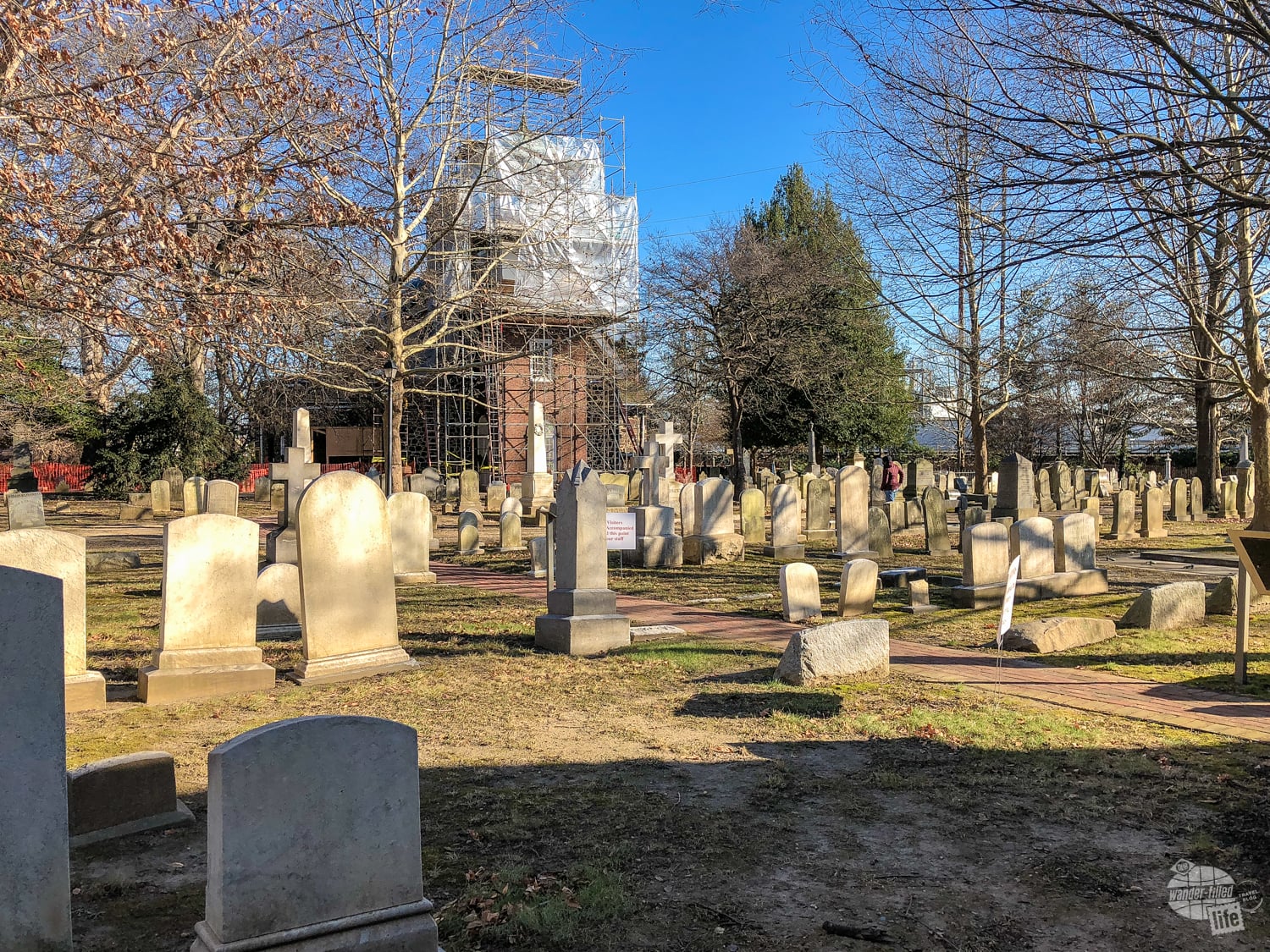
The church is a cute little stone church surrounded by a graveyard. Alas, the church was almost completely covered in scaffolding as part of restoration when we arrived. The one ranger on duty was not in the Visitor Center when we arrived, rather in the church doing a tour. We were on a bit of a time crunch, so we did not wait.
Just a few blocks away is Fort Christina, which is where the first Swedish and Finnish American settlers landed and settled the first American Swedish colony, New Sweden. Again, the site is currently completely closed for renovations. We drove by, but that was about as close as we could get.
Dover
From Wilmington, we headed south to Dover. Our first stop was the John Dickinson Plantation. This site was definitely a hidden gem and the highlight of the First State NHP.
John Dickinson was a noted politician and “penman of the Revolution” in the 1700s. He was a member of the Continental Congress and helped write the Declaration of Independence. You have probably never heard of him, though… His “demise” was in not signing the Declaration of Independence.
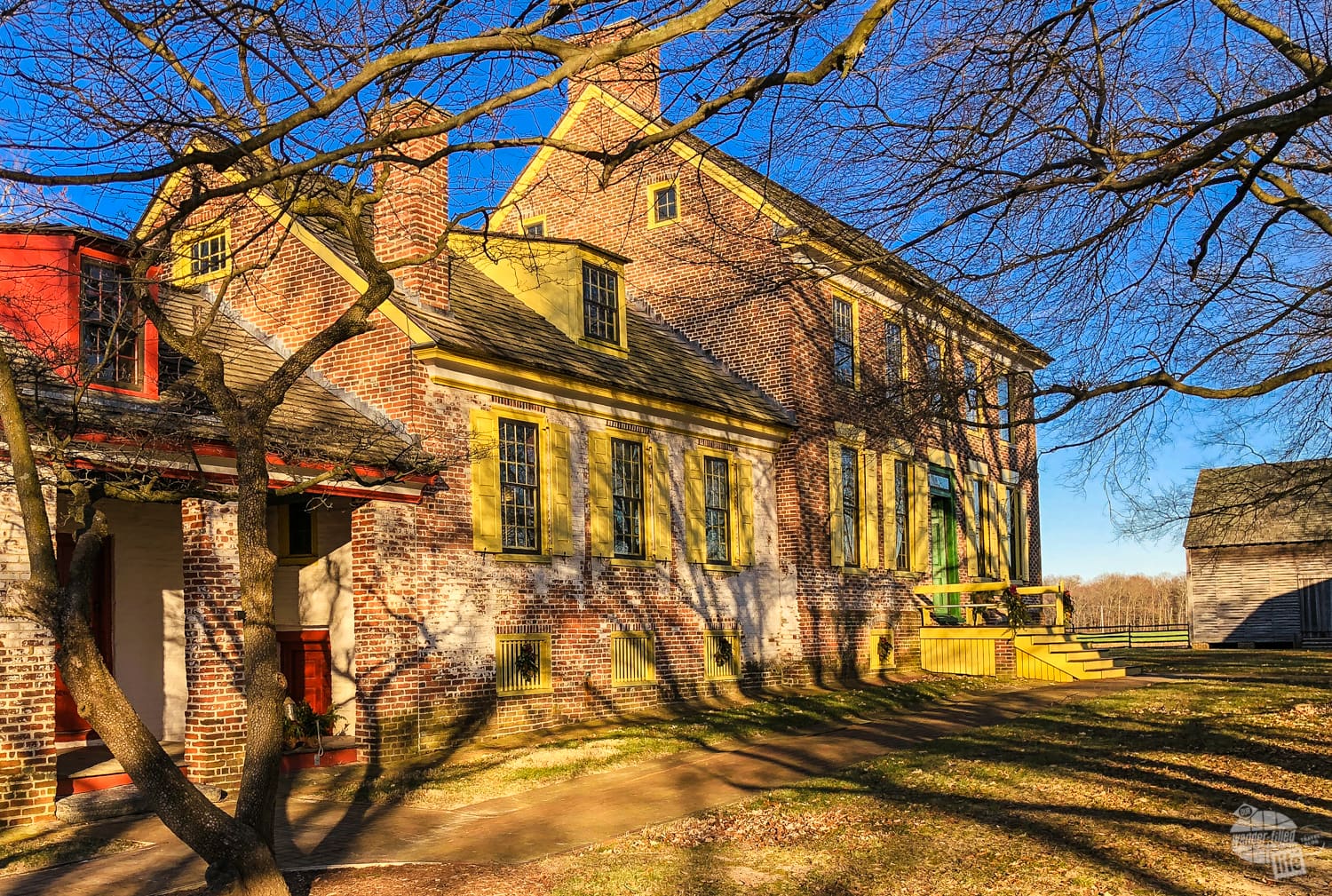
While he was a strong proponent of independence, he did not believe that the colonies were ready just yet. Despite strong pressure from others, he held fast to his principles and did not sign. While we are certainly glad that the Declaration of Independence was signed, we appreciate that Dickinson stuck to his principles and did not bow to pressure from others.
This site preserves his plantation, just south of the city, which contains the main house and barn, granary, smokehouse and several other buildings. After watching the introductory video, a volunteer provided a tour of the house, where we learned more about Dickinson and his life.
The visit took us a little over an hour and, best of all, was free!

Next stop: The Green. Right in the middle of the Historic Downtown, The Green was one of three public squares in Dover in the early 1700s. Surrounded by government buildings, homes and taverns, it quickly became the heart of the city. In fact, it was at one of the taverns on The Green that the US Constitution was ratified, giving Delaware the honor of being the first state.
According to the NPS website, there is a visitor center at First State Heritage Park, but we arrived right at closing time, so we missed it.
Other First State Sites
Since we planned to drive south to Ocean City, MD the next day, we decided to stop by the Ryves Holt House in Lewes. This house, built in 1665, claims to be the oldest surviving house in the state.
Timing struck us again, as we arrived before they opened (many sites in this area have very limited hours in the winter). We didn’t really care too much about the museum inside anyway, so we just took a couple of pictures and moved on. Honestly, we probably would not have even stopped if it wasn’t on our way.

We did not attempt to visit the seventh site within the First State NHP, the New Castle Court House. New Castle is located about 15-20 minutes southeast of Wilmington. We just did not have time in our schedule for the stop. The limited hours this time of year does affect what you can see in a day.
We enjoyed most of what we saw but were frustrated by the lack of National Park services, visitor centers and memorabilia. Grant was really hoping to find a magnet for our collection, but we never did. Perhaps we’ll visit again in the future when the park service has had more time to get this historical park operating more smoothly.
National Parks in Maryland
According to the National Park Service website, there are 18 national parks in Maryland. That number is a little misleading, though, as some are headquartered in other states or are units of a larger park. Additionally, the site lists 9 other sites that are affiliated or with the National Park Service but not officially included in the 424 national park sites.

Thus, figuring out exactly which parks we “need” to visit to finish our quest to visit all national parks has been a little frustrating. If you are working on the same quest, hopefully, the information below will help you out!
From my research, there are 13 park sites that have their headquarters in Maryland. Those are what I will consider the official Maryland national parks. These parks are listed below, with coverage on the parks we have visited. We are tentatively planning on visiting the others in Summer 2024 and will update this article as soon as we can.

The other sites located in Maryland are:
- Appalachian National Scenic Trail – stretches through 14 states from Georgia to Maine
- Harper’s Ferry National Historical Park – the headquarters are in West Virginia but also includes land in Virginia and Maryland (read our coverage of Harper’s Ferry NHP here)
- George Washington Memorial Parkway – winds through Washington, DC, Maryland and Virginia
- Potomac Heritage National Scenic Trail – includes areas in Pennsylvania, Maryland, Virginia and Washington, DC
I think the 18th site is Oxon Cove Park & Oxon Hill Farm, which is listed as part of the National Capital Parks – East. Interestingly, Glen Echo Park (in Glen Echo, MD) says it is owned and managed by the National Park Service but I can’t find where it is included in the official 424 sites.
Assateague Island National Seashore
Yep, we’re the crazies that went to the beach when the temperatures were in the 20s! Needless to say, we did not spend much time actually walking on the beach. We certainly did not put on a bathing suit and swim or sunbathe!
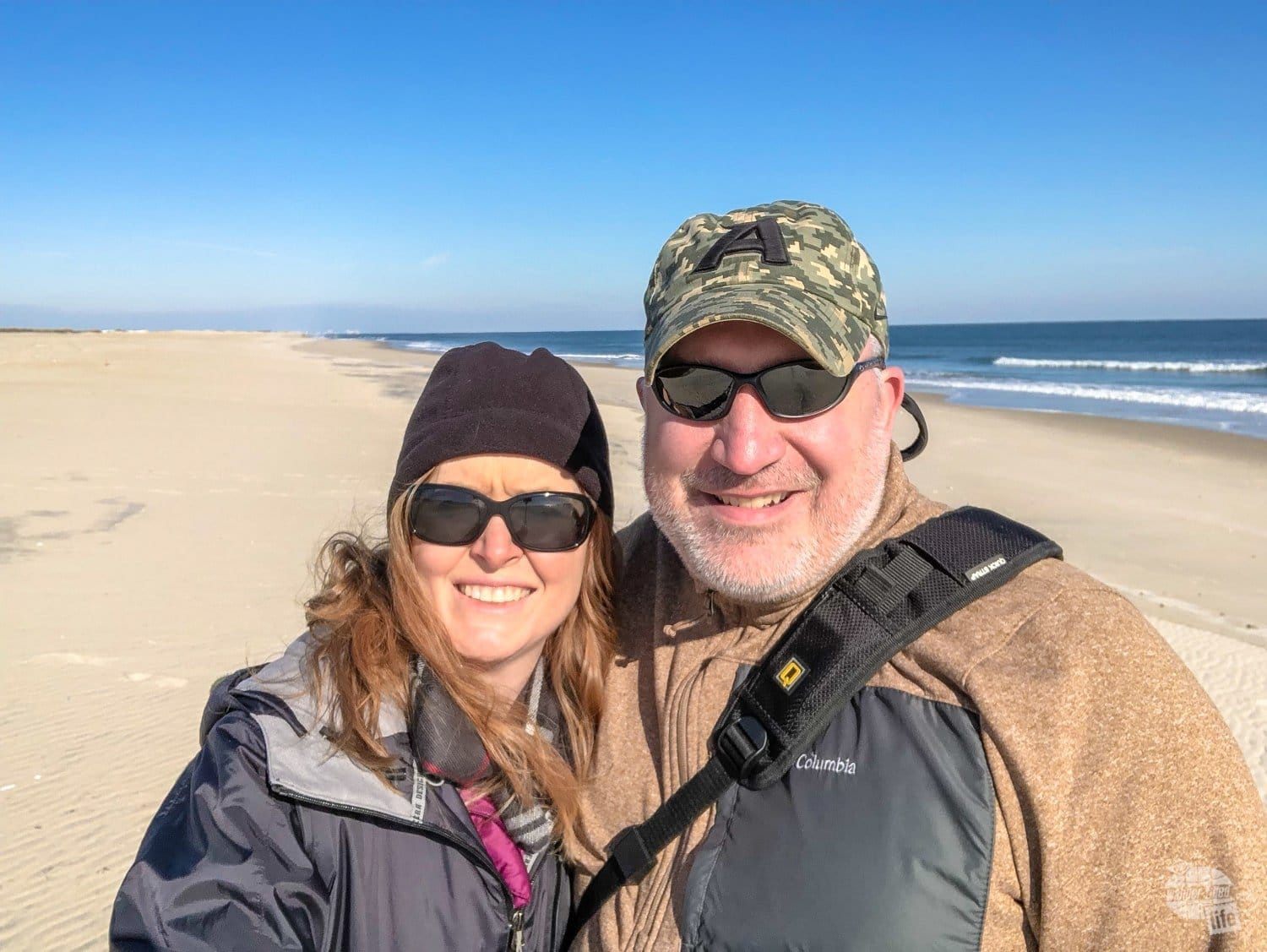
The Assateague Island National Seashore is actually in both Maryland and Virginia. We only visited the Maryland side, which is about 20-30 minutes south of Ocean City. There is also a portion that is a state park and there is a National Wildlife Refuge. Needless to say, this is a very protected area!
Assateague Island NS is best known for the wild horses that live there. It is also a pretty great beach and I’m sure one that is VERY busy in the warmer months!
What to Do at Assateague Island NS
In the winter, there really was not much to do other than the short drive and a few short nature trails. We, of course, walked out onto the beach and took a few pictures. But, the low temperatures and wind made it difficult to stay out too long.

The main drive has a couple of short side roads on the bayside. In the summer you can kayak, canoe, go clamming and crabbing or rent a bicycle. None of this was open in the winter. What we did have was plenty of parking spaces and very few people, though!
We enjoyed the Marsh Trail, which was a short, mostly boardwalk trail over the marsh. We didn’t see much more than frozen water on our trek, but it was still pretty and interesting.
Other than the beach, the highlight of the park is definitely the wild horses. We found the horses right off the main road, in a couple of the beachside parking lots and near the campground.
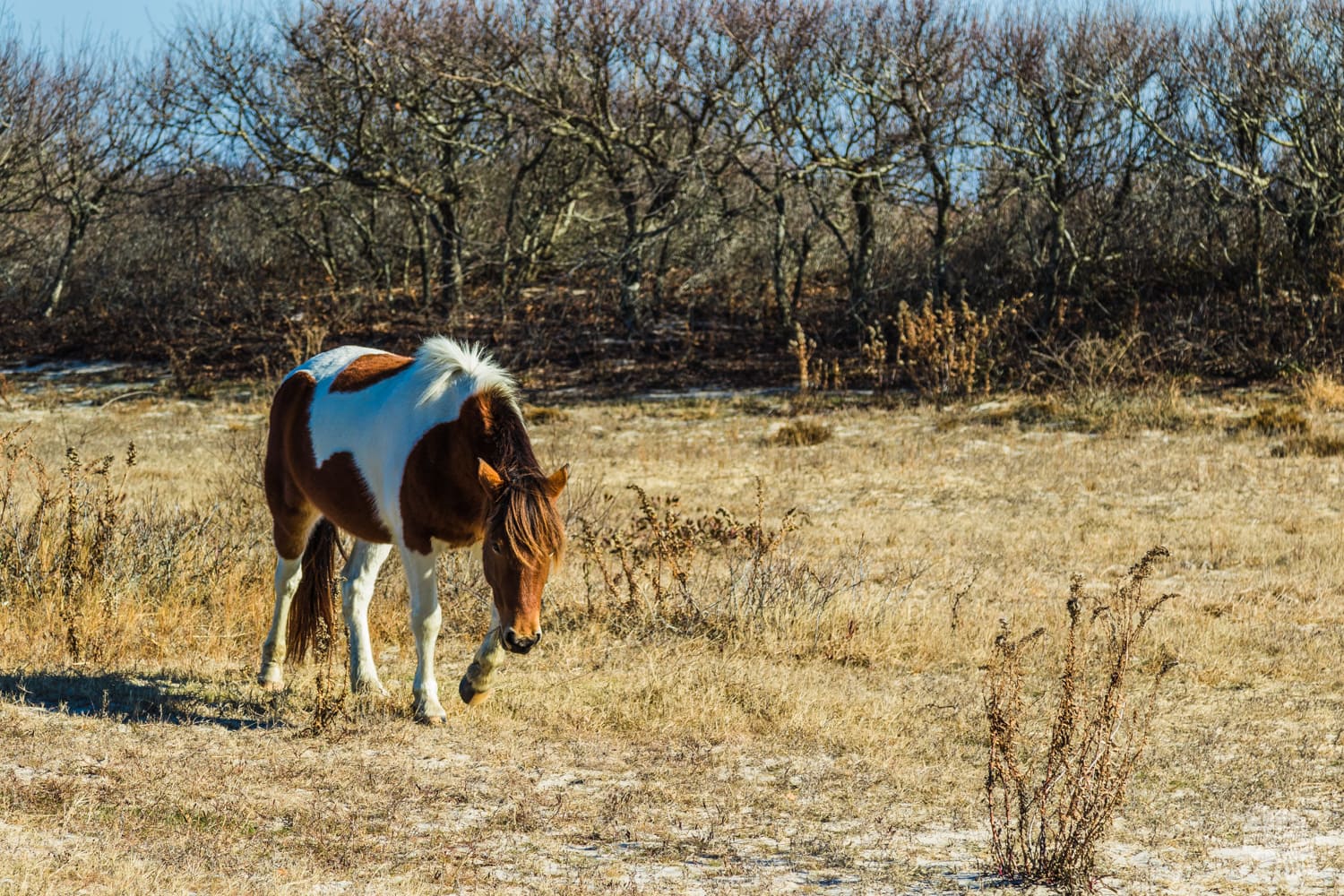
You are not supposed to touch or feed the horses because, well… they are wild. Please follow these rules as they are there for your protection and the horses.
We only spent a couple of hours here. In the summer, I would definitely expect to spend the better part of a day, or even several days if you wanted to do some camping. If you are looking to visit the Virginia side, you will have to exit the park and drive around, which is a little over an hour.
We stayed in nearby Ocean City, MD at the Hilton Suites Ocean City Oceanfront right on the water. It was an excellent use of a free night certificate and we would gladly stay here again.
Book the Hotel | Read TripAdvisor Reviews
Harriet Tubman Underground Railroad National Historical Park
The Harriet Tubman Underground Railroad NHP is located on the west side (bayside) of the eastern peninsula, commonly known as the Eastern Shore, of Maryland. Be careful to not confuse this site with the Harriet Tubman National Historical Park in Auburn, NY.
I will also caution you to not get too wrapped up in the fact that this site is a National Historical Park. The site really is little more than a museum. Granted, it is a new park and is still a “work in progress.” The NHP Visitor Center claims to be a gateway to the larger Harriet Tubman Underground Railroad Scenic Byway.

Again, as a new park, it is operated through a partnership with the Maryland Park Service. The Visitor Center museum has exhibits sharing the life and legacy of Harriet Tubman, who was born a slave in this area of Maryland. Tubman eventually escaped slavery, yet continued to return to Maryland to help more than 70 friends and family members escape through the Underground Railroad.
We spent about an hour touring the museum exhibits. We thoroughly enjoyed the museum and found it very well done and informative.
Our biggest gripe is the lack of facilities for a national historical park. I suppose we just wanted “more.” We do understand, though, that it is a new site and the National Park Service is still working on updating the overall visitor experience.
Hampton National Historic Site
Located about 20 minutes north of downtown Baltimore, Hampton NHS preserves a historic Georgian mansion. What is unique about Hampton is that it has no real historical or national significance, other than its architecture and ornate furnishings.
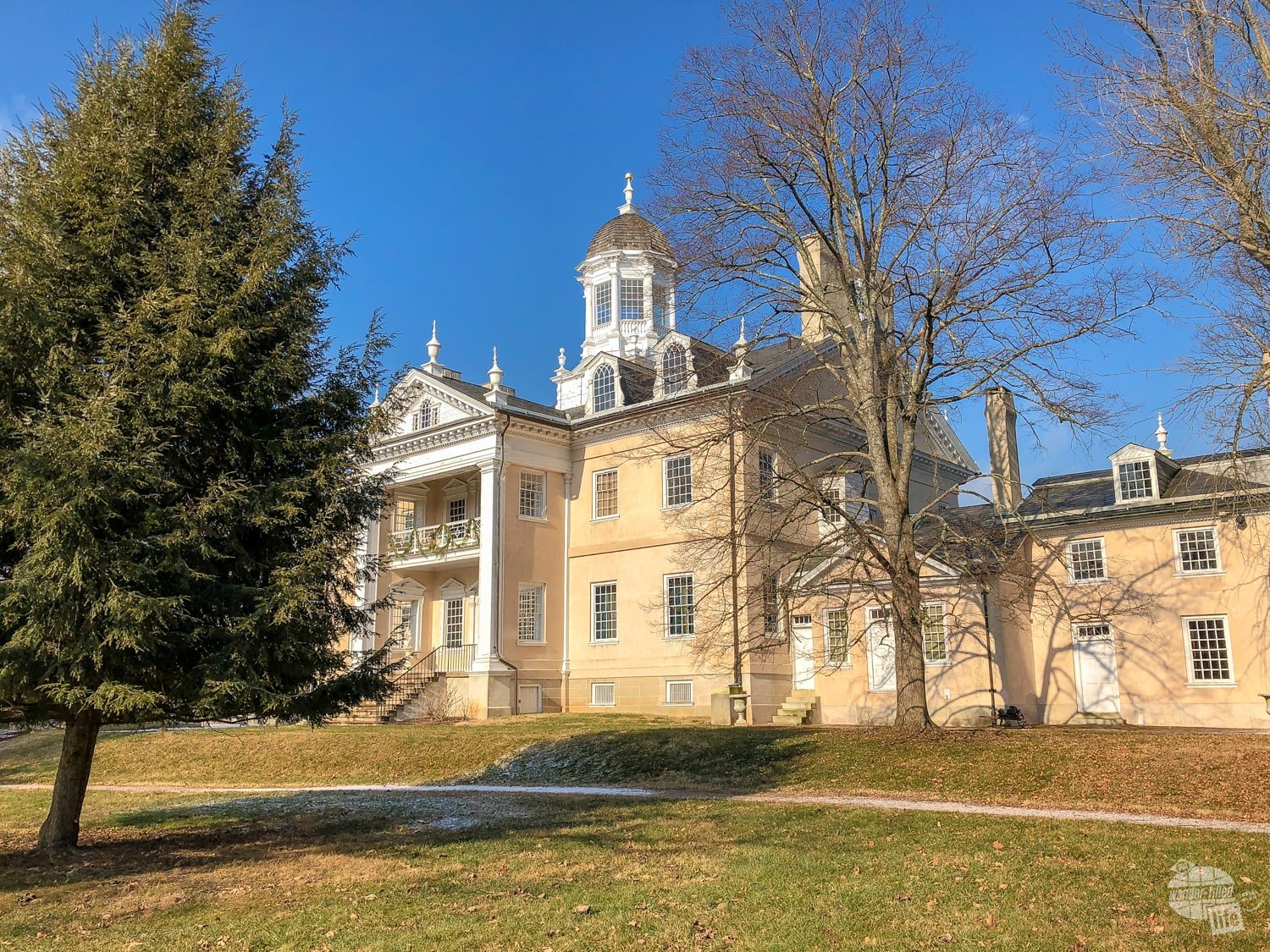
According to the Hampton NHS brochure, Henry Winthrop Sargent wrote, in 1859, “It has been said of Hampton that it expresses more grandeur than any other place in America.” Indeed, everything about the mansion is opulent from the grand entrance hall to the hand-painted window shades.
Built in the 1780s by Captain Charles Ridgely, the estate presents the wealth and grandeur of a prominent Maryland family. Capt. Ridgely made his fortune in ironworks during the Revolutionary War. Future generations continued amassing wealth through coal mining, marble quarries, crops and cattle and other ventures.
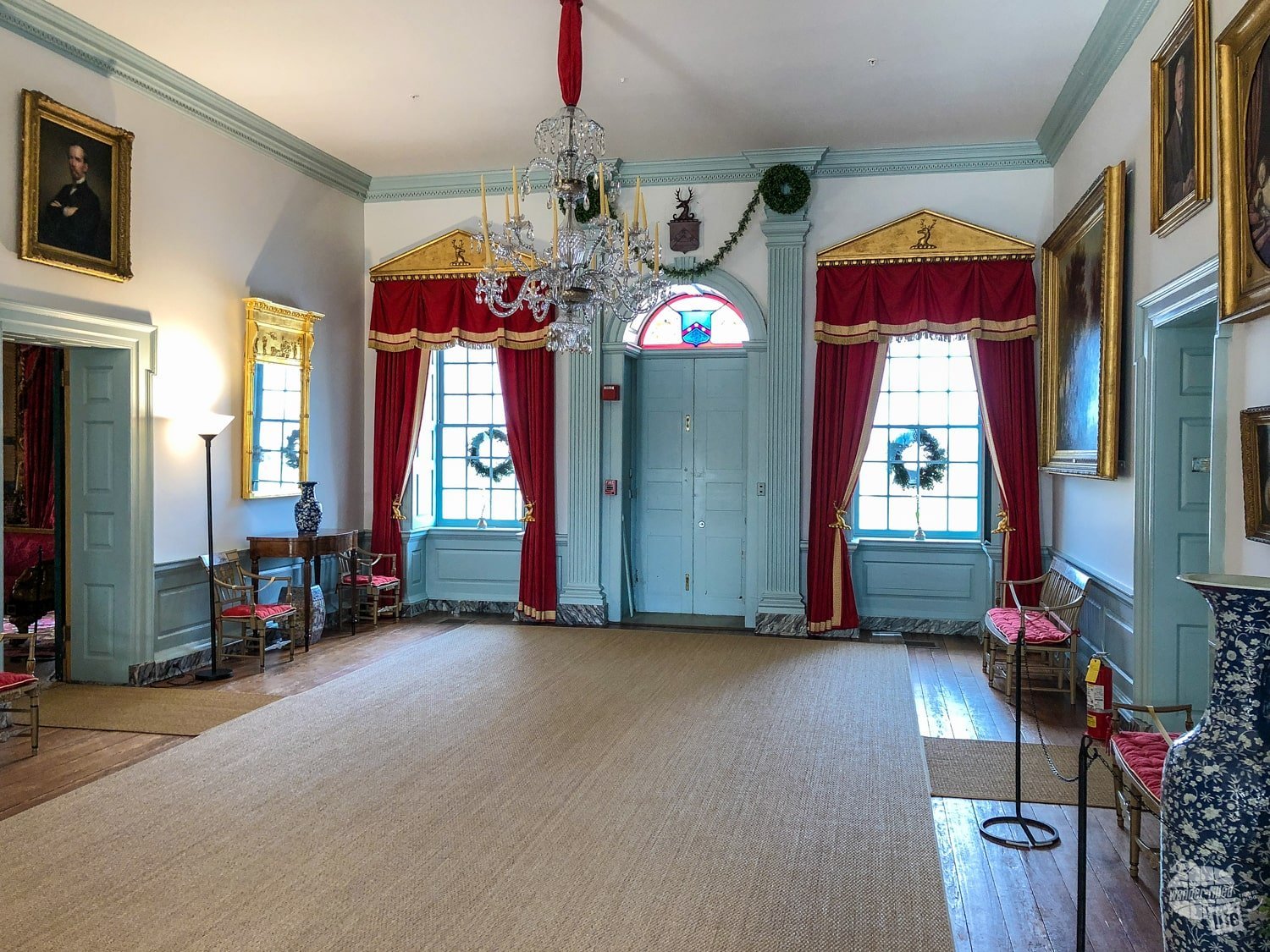
Ownership of the estate passed to the eldest son of each generation. The estate stayed in the family through the mid-1900s when it was designated a national historic site. Even after opening for tours, John Ridgely Jr. and his wife continued living on the property, in the farmhouse.
Visiting Hampton NHS
You will likely need at least a couple of hours for a complete visit. The highlight and must-do activity is a tour of the mansion. We almost skipped the tour due to our schedule, but, in hindsight, that would have been a horrible mistake! The tour was definitely worth the hour-long wait for it to start. The tour lasted about an hour and was free.

You can sign up for a house tour at the small Visitor Center. While waiting for your tour to start, you can visit the Lower House, which contains the farmhouse and slave quarters. The Ridgely family lived in the farmhouse while the mansion was being built in the 1700s and after the mansion was opened for tours in the 1900s.
Back at the mansion, there are many small buildings to explore, as well. The ice house and orangery were particularly unique for the time.
The tour itself started with an informational video. We would have much preferred the video be played at Visitor Center, so visitors could watch it before the tour or even instead of the tour. The video does provide a good overview of the family and the estate.
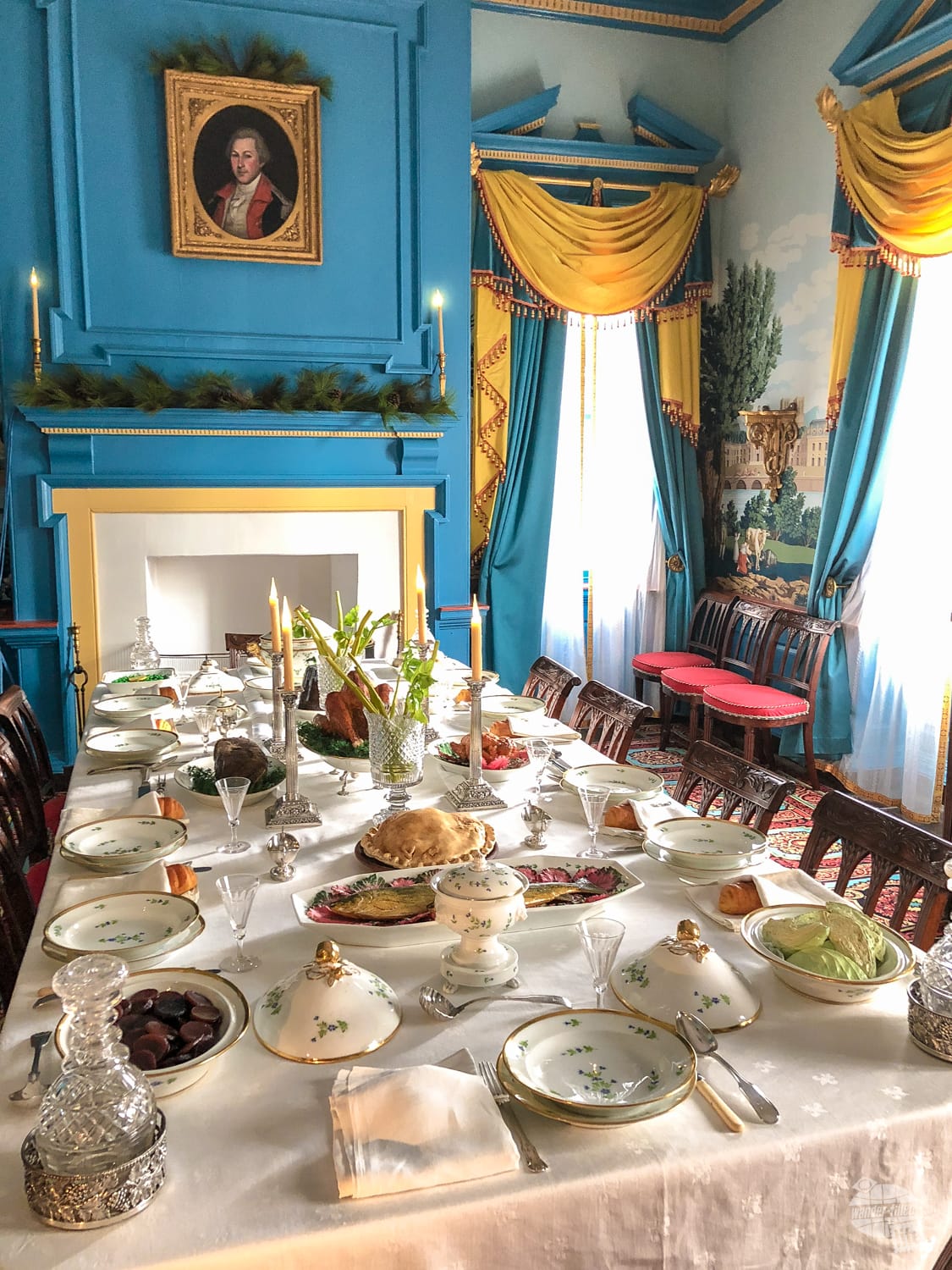
The tour itself was very informative with additional historical information and details about family members, rooms and furnishings. One unique aspect of the mansion is that the park service decorated each room for a different time period, rather than showing the house as one moment in history.
Our visit to Hampton NHS was another hidden gem. We had little to no idea what to expect going in, but thoroughly enjoyed the visit and the history lesson.
Fort McHenry National Monument and Historic Shrine
With probably the most unusual national park designation, Fort McHenry National Monument and Historic Shrine is located in Baltimore, right off I-95. We have visited MANY coastal forts over the years, and Fort McHenry is not that dissimilar to the majority of them.

What is significant about Fort McHenry is that the defense of the fort against a British naval attack in 1814 inspired Francis Scott Key to write his famous poem.
As usual, stop at the Visitor Center to start. The visitor center, film and exhibits are free. There is, however, a $10 fee to visit the fort itself. The exhibits provide a very thorough explanation of the battle for Baltimore and the story behind “The Star-Spangled Banner.” We won’t give away any spoilers, but be sure to watch the movie and stay through the end.
The National Park Service offers several programs, weather permitting, including flag changes and flag talks. The day we were there was extremely cold and windy, so they did the flag talk inside, for which we were very appreciative!
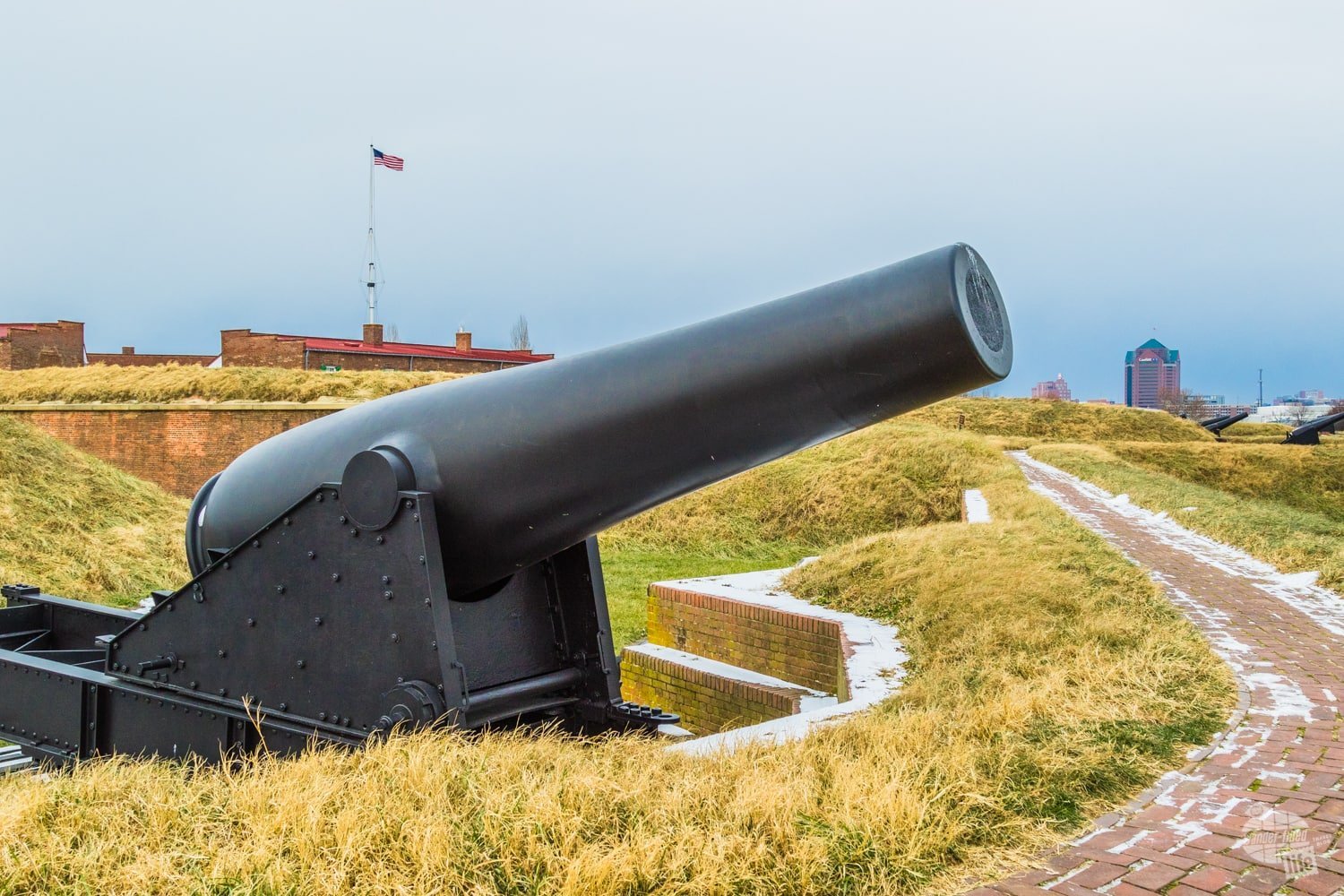
We did just a quick walk through the fort and grounds. Altogether, we probably spent a little over an hour visiting Fort McHenry. I would suggest allowing at least a couple of hours, especially if you are a history buff or have not visited a lot of other forts. Warmer temperatures would also make a stroll along the water much more enjoyable!
Fort Washington Park
A little more than an hour south of Baltimore and just 30 minutes south of Washington, DC are a couple of small national park sites near Fort Washington, MD.
The first of these for us was Fort Washington Park, located right on the Potomac River. Nestled behind a thriving neighborhood, you are not going to find Fort Washington accidentally!
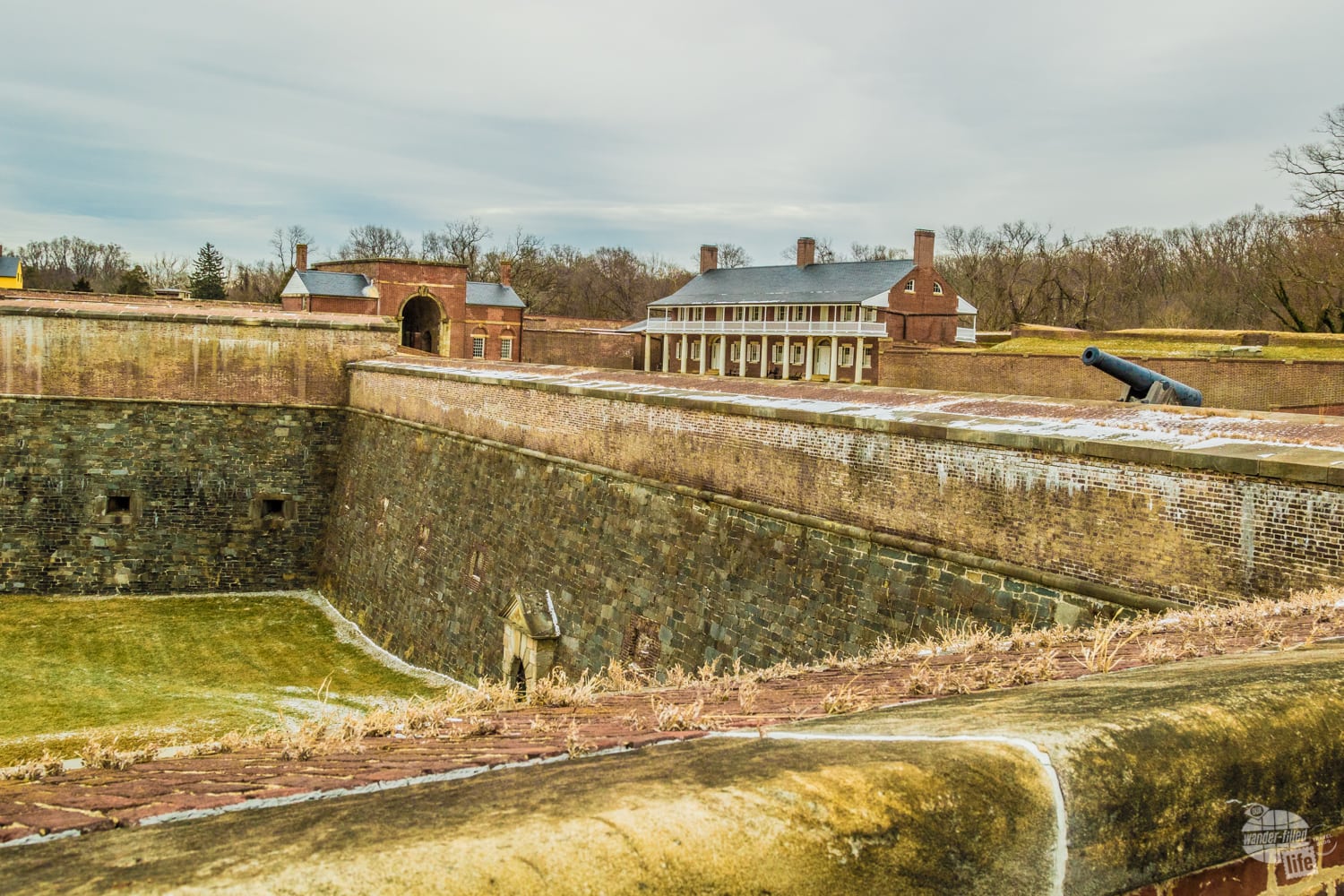
Fort Washington was built to protect the approach to the capitol after its predecessor, Fort Warburton was destroyed during the War of 1812. The fort was used in the Civil War, Spanish-American War and World War I. It was also used as a training facility during World War II. The National Park Service officially took over in 1946.
There is a small visitor center with a short film. After watching the video, we took a quick walk around. Again, visiting in the winter will certainly cut your visit short, unless you have some great weather or are really hardcore! The wind was especially brutal, which is not surprising considering its location on the Potomac River.
In addition to the fort itself, there is a three-mile trail around the park boundary. There are also opportunities for fishing and bird watching.
Piscataway Park
Just about 15-20 minutes south of Fort Washington is Piscataway Park. Piscataway preserves wetlands, woods and meadows. It is also home to the National Colonial Farm.
When we visited in early January 2018, the visitor center was closed. Thus, all we could do is a quick walk through a farm area with sheep and chickens. Thankfully, we were able to revisit the park in the summer of 2023. That said, there still isn’t really a ton to do other than visit the farm.




Since our winter visit seemed almost pointless, we were really excited to be back in the summer. Sadly, Grant still couldn’t get a magnet… the park had difficulties with its entire computer system and couldn’t make any sales.
Still, we were able to walk around the National Colonial Farm again and see a few more animals, including cows, pigs and turkeys. They also have a small historic Farm House with a backyard garden, a tobacco barn and a livestock barn.

In addition to the farm, there are a couple of docks along the Potomac River. Looking across the river, there is a great view of George Washington’s home, Mount Vernon. Finally, there are a few short hiking trails. Unfortunately, we didn’t have a ton of time to explore these, as we were on our way to a Buddy Guy concert at Wolf Trap National Park for the Performing Arts.


While Piscataway looks and sounds like a pretty cool site, we certainly would not suggest a winter visit. The park is technically open, but there isn’t much of anything you can do unless you are already familiar with the area. Even in the summer, it is not really a “destination” site. The site’s proximity to other park sites makes it easy to visit but it is clear this park is geared more towards locals and children.
Thomas Stone National Historic Site
Driving another 20-30 minutes south takes you to the Thomas Stone National Historic Site.
This site preserves the home and farm of one of the country’s forgotten founding fathers. In addition to signing the Declaration of Independence, Thomas Stone also helped draft the Articles of Confederation, the governing document before the Constitution was adopted.

A visit to the Thomas Stone National Historic Site provides the opportunity to learn more about this lawyer and politician while touring his plantation home, Haberdeventure. The highlight of the Stone Plantation is the house itself, which can only be accessed on a ranger-guided tour. Surrounding the home, you’ll find a few other structures including a horse barn, corn crib and tobacco barn.
Start your visit at the Visitor Center, where you can sign up for a house tour, watch the park film and view a few exhibits on Stone’s life and accomplishments. From there, you can walk a couple of different trails over to the main house. One of the trails passes right by the cemetery where Stone and his wife, Margaret, are buried.





Note: Visitors are expected to walk from the visitor center to the house, which is about a 10-minute walk. There is a small parking area right at the house for those will accessibility needs.
Throughout the tour, you’ll learn more about Thomas Stone, his family, the history of the house and the 25-35 people who lived there, which included slaves and extended family.
We spent roughly 2 hours at this site, including about an hour on the house tour.
Antietam and Monocacy National Battlefields
The battles at Antietam and Monocacy are two of three Civil War battles that took place north of the Mason-Dixon Line. Gettysburg, in Pennsylvania, is the third.
Monocacy National Battlefield is located near Frederick, MD, about an hour northwest of Washington, DC. This was the final invasion of the North by the Confederates.


Antietam National Battlefield is about 40 minutes northwest of Monocacy. The battle at Antietam is noteworthy for being the single bloodiest day in American history.
We visited Antietam, Monocacy, Gettysburg National Military Park and Harpers Ferry National Historical Park in the summer of 2016. That actually was the first summer we had our camper and the year we started Our Wander-Filled Life!
Check out Grant’s two articles with full coverage of these national park sites:
Visiting Harpers Ferry and Antietam (plus Monocacy)
Gettysburg National Military Park with Eisenhower National Historic Site
Final Thoughts on the Maryland and Delaware National Parks
For us, visiting the national park sites in Maryland and Delaware has, honestly, been a little frustrating. With so many sites clumped together in the lower mid-Atlantic region, especially right around Washington, DC, it is easy to see a lot of parks in a short amount of time.
But, winter is not necessarily the best time to visit this area. First, it is cold. We were traveling for nearly two weeks and seriously only saw temperatures above freezing for a few hours total. Most of our daytime temperatures were in the 20s.


Second, most of the sites operate on limited hours or are closed completely in the winter. Several places we visited only were open on the weekends or only gave tours on certain days. This definitely affected what we could do on any given day.
Third, the sun goes down really early this time of year! Seriously, by about 5:00 or 5:30 it was nearly, sometimes even completely, dark. This definitely made it difficult to do a lot of sightseeing.
In the summer, you’ll find warmer temperatures and more sunlight but also more crowds. That said, some of the smaller sites might still have very limited hours. Be sure to check each park’s website early to confirm operating hours and tour schedules.
We are tentatively planning to return to the mid-Atlantic in the summer of 2024 to visit the remaining four Maryland sites, along with other park sites in the Washington, DC area. That should definitely keep up busy for a while!
Travel Resources
What do you use to find a flight?
We use Skyscanner to find deals on flights. Skyscanner has a great interface and compares tons of airlines for the best pricing and routing. That said, it does not always have every airline and some airlines will have better deals on their website. Still, Skyscanner is a great place to start.
Click here to search for a flight.
What do you use to find a hotel?
We typically stay at Hilton properties, so we use the Hilton website. You can find good Hilton Honors discounts or AAA discounts for a hotel there. We make great use of our free night certificates from our Hilton Honors American Express.
Click here to book a Hilton property.
If there are no Hilton properties available, we use TripAdvisor to read reviews and book the hotel. We find we can get the best price that way.
Click here to search for a hotel.
We recently partnered with Stay22 to add interactive maps to each of our destination posts. This will allow you to see a plethora of hotels and vacation rentals all in one responsive map of the area.
What if I need more space than I can get at a hotel?
We use Vrbo for the times when we have rented a cabin for a weekend getaway, like this cabin in Townsend, TN, or needed to rent a house for a large family vacation. We had a great experience with them in terms of refunding deposits when COVID hit and will continue to use them.
Click here to search for a vacation rental.
Who do you use for rental cars?
As a general rule, we book with Hertz for rental cars. We have had nothing but good experiences with them. Plus, we really like unlimited mileage and not worrying about crossing state lines. We have even rented from Hertz overseas in both Slovenia and Croatia.
Click here to book a rental car.
How about booking a cruise?
We have found some amazing prices for booking a cruise through Cruise Direct. We have saved a lot of money on our cruises compared to what we found elsewhere, making a last-minute Bahamas cruise even cheaper.
Click here to book a cruise.
What if I want to rent an RV?
We highly recommend Outdoorsy for RV rentals. We rented a camper van for a week to visit Rocky Mountain National Park for the elk rut and Custer State Park for the Buffalo Round-Up and had a blast. The program was easy to use and we really enjoyed the freedom of having a camper van for that trip.
Click here to rent an RV.
What do you use for booking tours?
We don’t often book tours. Typically, we like to do stuff on our own. That said, there are some experiences you can’t have any other way. So, when we do want to book a tour, we always check Viator first.
Click here to book a tour.
Do you use anything to get discounts on the road?
We make extensive use of both Good Sam and AAA on the road. Good Sam is normally regarded as a discount card for RVers at campgrounds and Camping World but anyone can use the 5 cents off a gallon at the pump at both Pilot and Flying J.
Click here to get a Good Sam membership.
We have had AAA as long as we have been married and it has more than paid for itself in discounts at hotels, aside from the peace of mind of having roadside assistance. Add in paper maps and the ability to get an international driver’s license and it is more than worth it for any traveler out there.
Click here to get a AAA membership.



Bonnie,
As a West Coaster, I haven’t been able to visit this area much, but you’ve certainly piqued my interest. I share your frustration about how liberal the Park Service has become with site designations in the last 20 years. Hopefully this serves to advance preservation funds for these sites.
Safe travels
Thanks, Tucker! Hope you make it out there eventually. We learn something from every park we visit, even if we don’t understand the naming designations!